
Some recent discussion has prompted me to do a quick thread on some UK road gantries (Disclaimer: Not A Designer). You may have noticed the latest road gantries have different designs and look bigger, & bulkier, than previous designs 1/ #roads #motorway #gantry #construction 
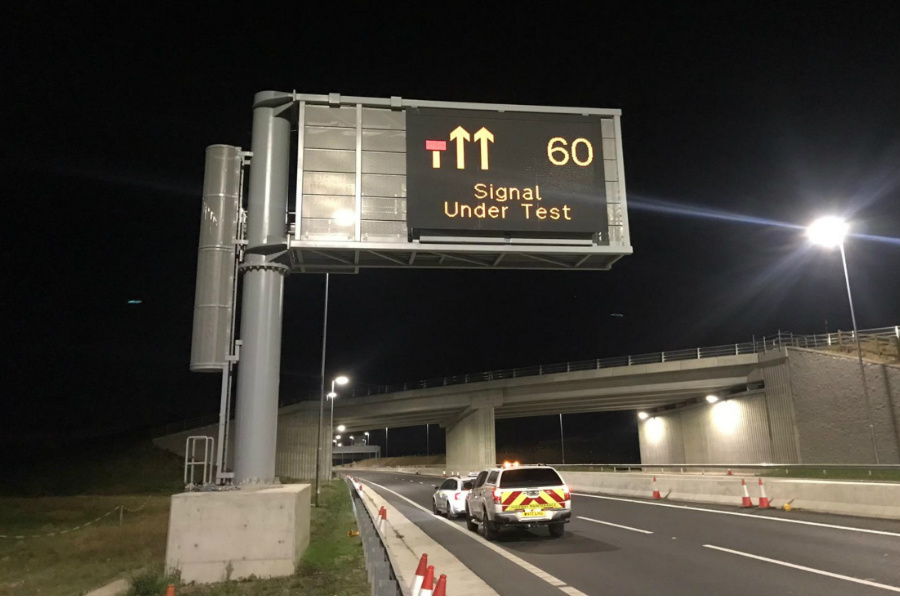
Pic 1 is of a cantilever MS4 (large square matrix display) gantry, has been around for 10yrs+, it looks very sleek, slender and unobtrusive - contrast to pic 2, also for an MS4, which looks far bigger and bulkier 2/ 

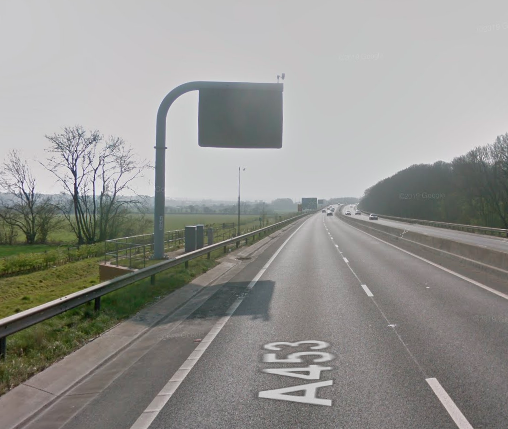
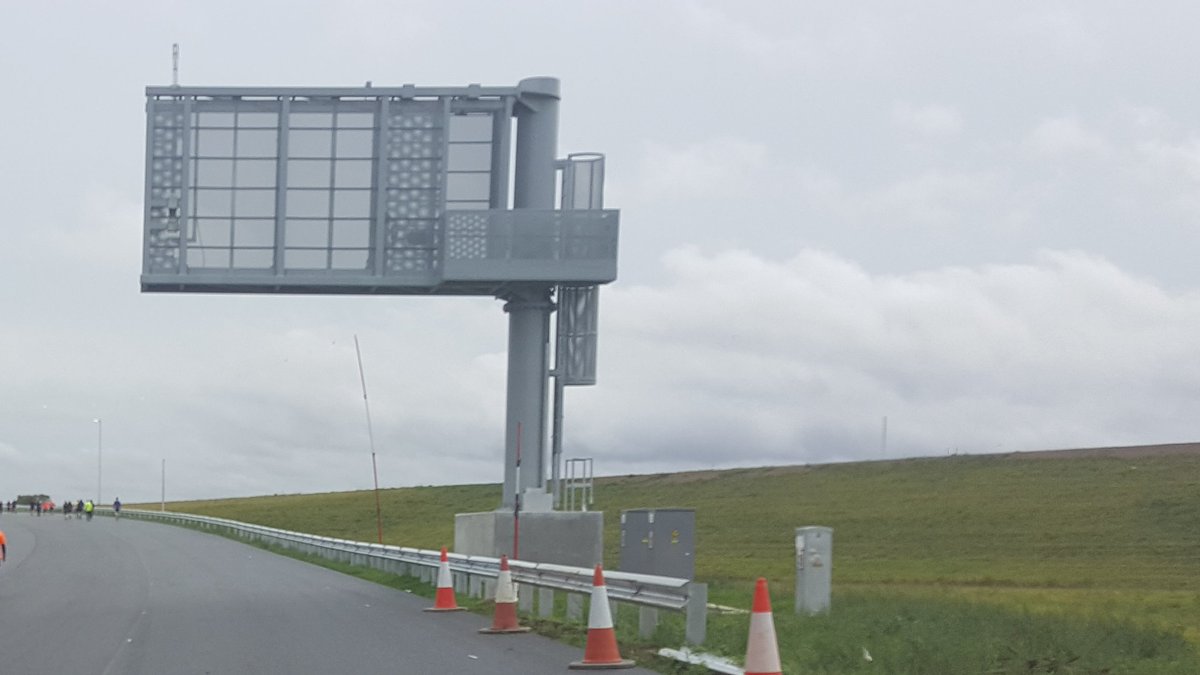
The main reason is the tech - old 1980s road gantries were designed as accessible - there's a ladder access on the left gantry leg - to allow maintenance. However they didn't really get used except for by trespassers to unfold banners from (Remember the M1 in 2016 anyone?)3/ 

We didn't really install gantries at a massive rate until 2004 when the first Smart Motorway (or M42 Active Traffic Management scheme) came about. Gantries were every few hundred metres and so costs needed to be saved, so the gantries were non-accessible & lightweight 4/ 

The Active Traffic Management had lots of matrix boards, CCTV, speed cameras, and we hadn't installed tech at that sort of rate for a while. Soon it was needing a lot of maintenance. In fact, you would need a lane closure every night for a year to keep up with the maintenance 5/
...just on the M42 scheme. Lane closures are expensive, they put workers at risk, & cause disruption to the public and businesses using the road. Gantries are high, and so need access equipment, which means more lane closures. Here we closed 3 out of 4 lanes to access the gantry: 
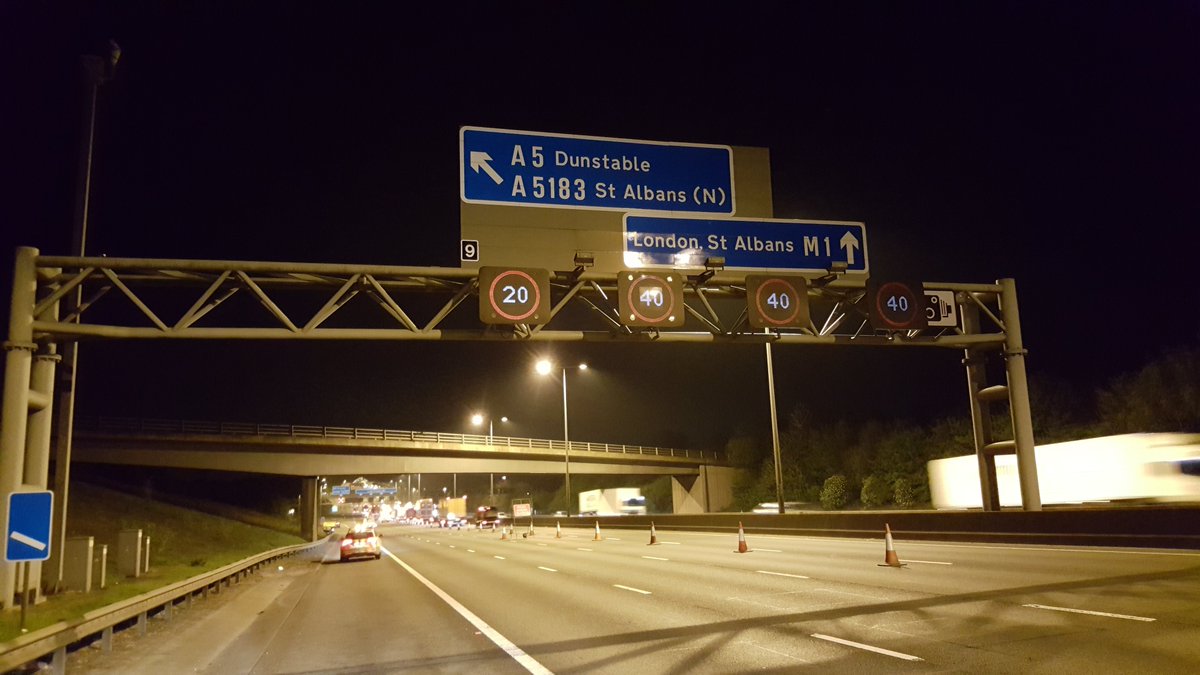
Highways England tried to come up with innovative solutions, such as this lorry-cum-scissor lift, similar to those used at airports, but you're fixing a problem afterwards, not designing the issue out before its built (Link theconstructionindex.co.uk/news/view/scis…) 6/ 
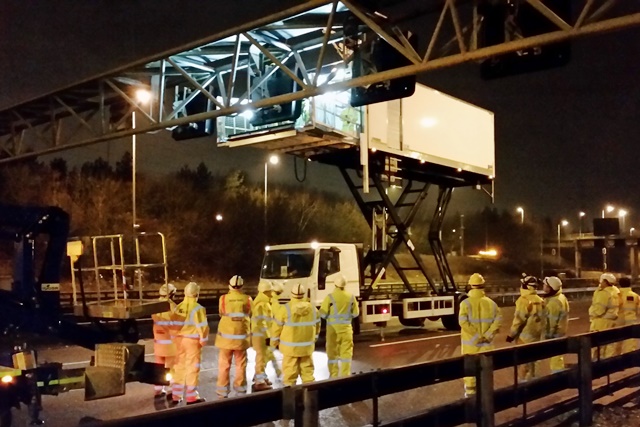
So the decision was made that new gantries would be mostly accessible, to allow mainteance without shutting the road. Most gantries designed & built after 2015 are to these new standards, although there are exceptions 7/
New gantries have ladder access, a walkway, mesh enclosures to stop tools getting dropped on cars below, laybys to park maintenance vehicles. The tech comes with more access panels to replace parts, reducing the need for future road closures (in theory) 8/ 

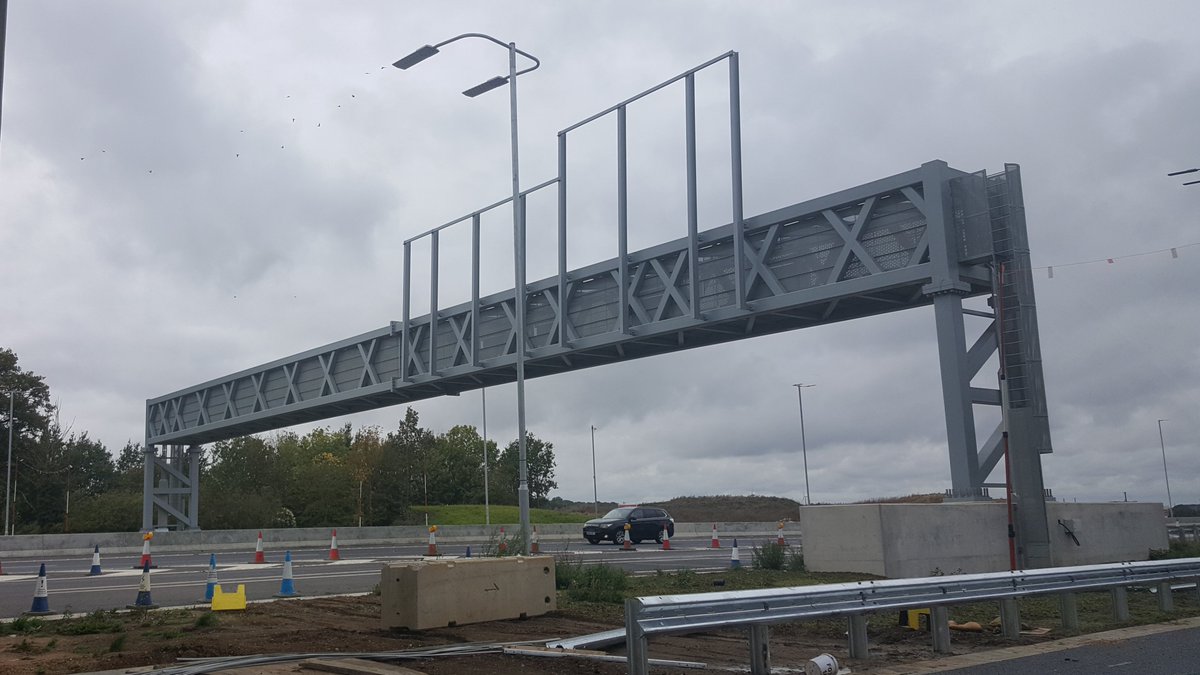
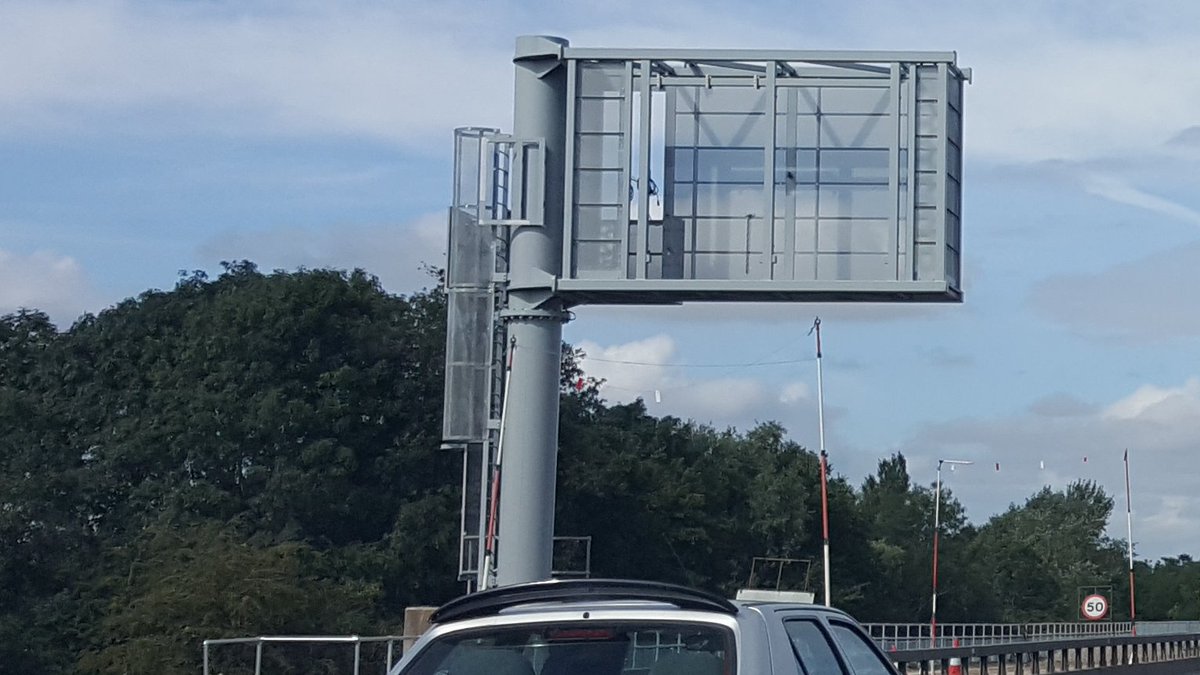
Highways England recognises that the way we drive is going to change. Self-driving cars may require roadside tech such as transponders, radar etc. New tech is coming to market eg. side-fire radar and enhanced CCTV which means the gantries may have different tech fitted in future.
Therefore most gantries are now done to a standard design, to allow various signage & tech configurations if required. The standard design also saves cost (as not doing a bespoke design each time) which you can read more about here: uk.ramboll.com/projects/ruk/g… /10
There's another major component to gantries - the substructure. Gantries generate loads on the ground, particularly overturning forces on cantilever structures (bending moment). Huge signs can also risk a high wind load. Therefore foundations need to be suitable to support it 11/
Gantries generally in two types - cantilever (one support), or portal span (two supports straddling a carriageway) 12/ 

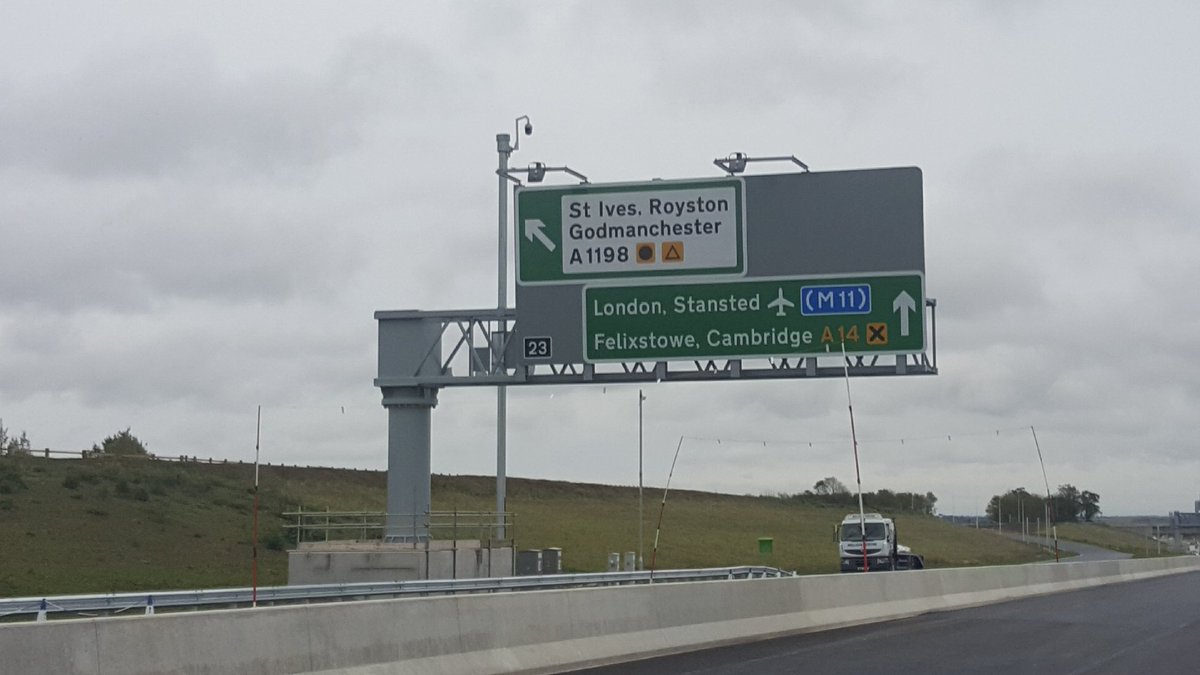
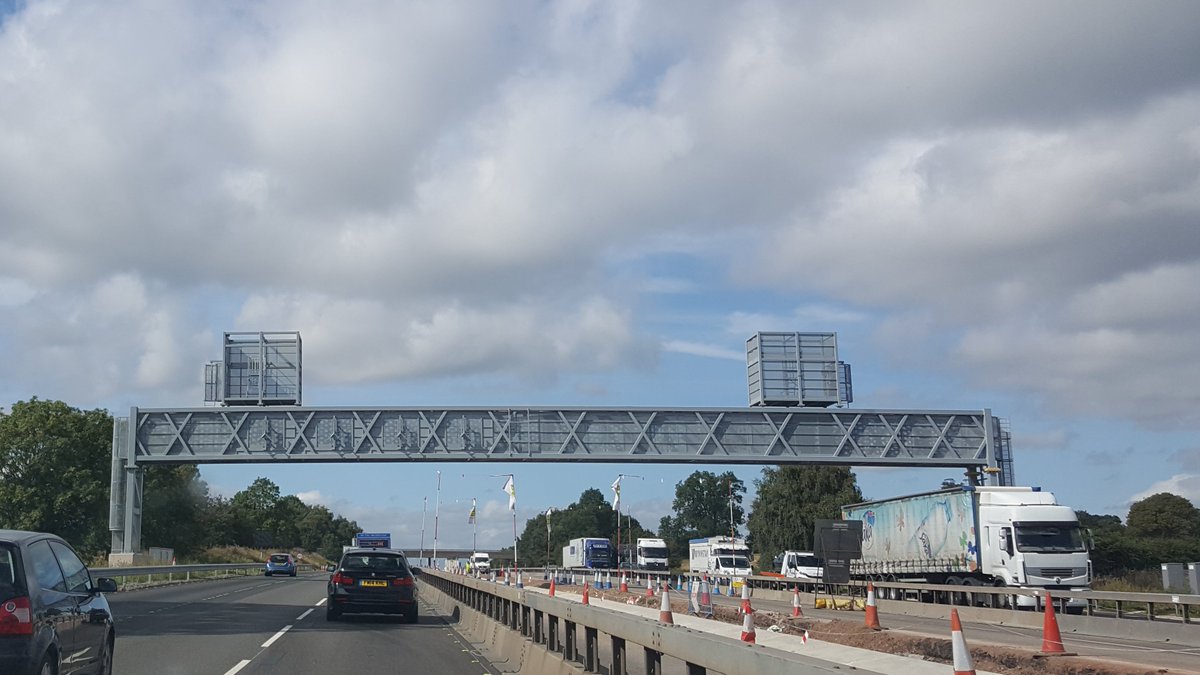
To save on costs some portal gantries only used to span one half of the motorway, but this made them difficult to access the support in the central reserve and this support was twice as likely to get hit and damaged by vehicles, so now most gantries span the whole road 13/ 
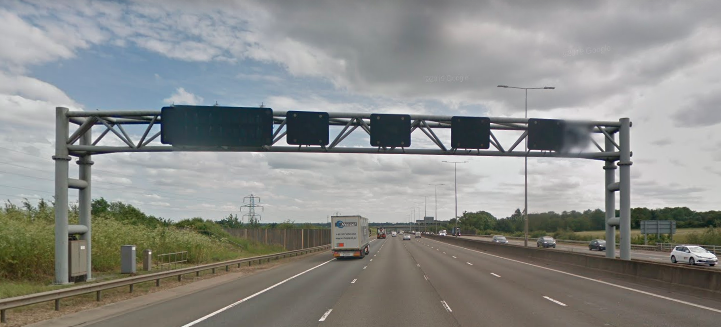
Gantries mostly supported on piles; long holes drilled into ground and filled with concrete and steel, like tree roots (I'll cover piling another day!) - this is a foundation for portal gantry with 5x 600mm dia piles, going 25m deep into ground 14/ 
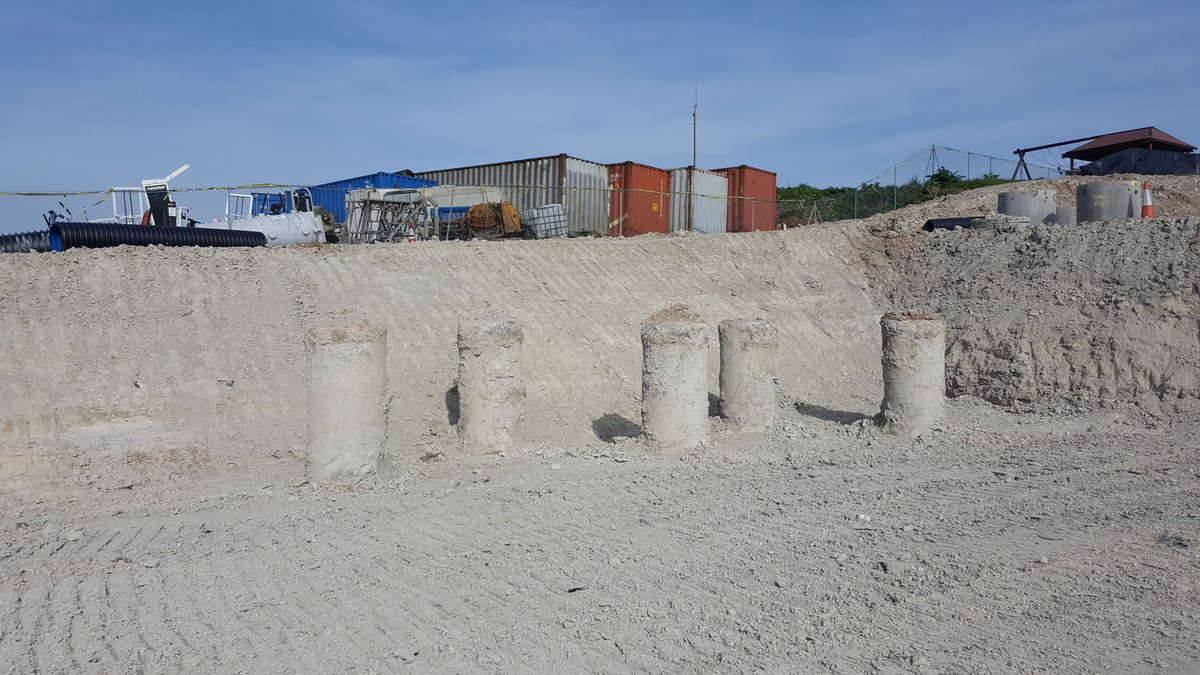
The top bits of concrete are broken off to expose the steel (cropped) and then concrete put down to start building the pile cap - the cap is a block of concrete that joins all the piles together so they works as one big foundation 15/ 

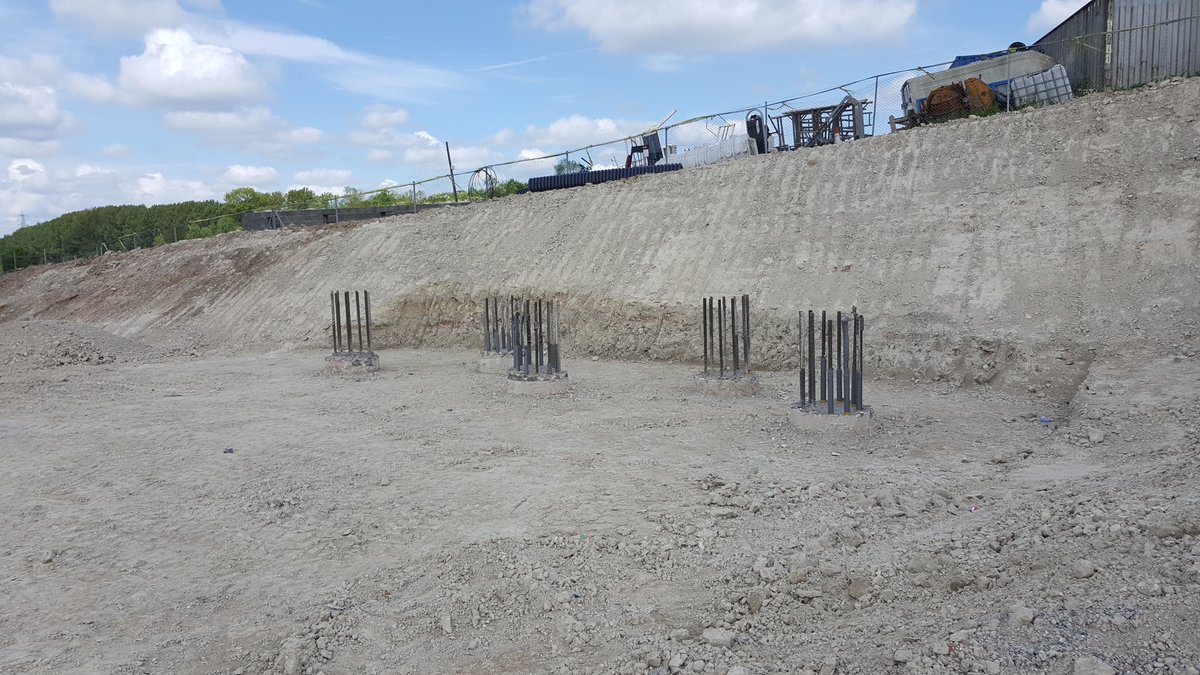
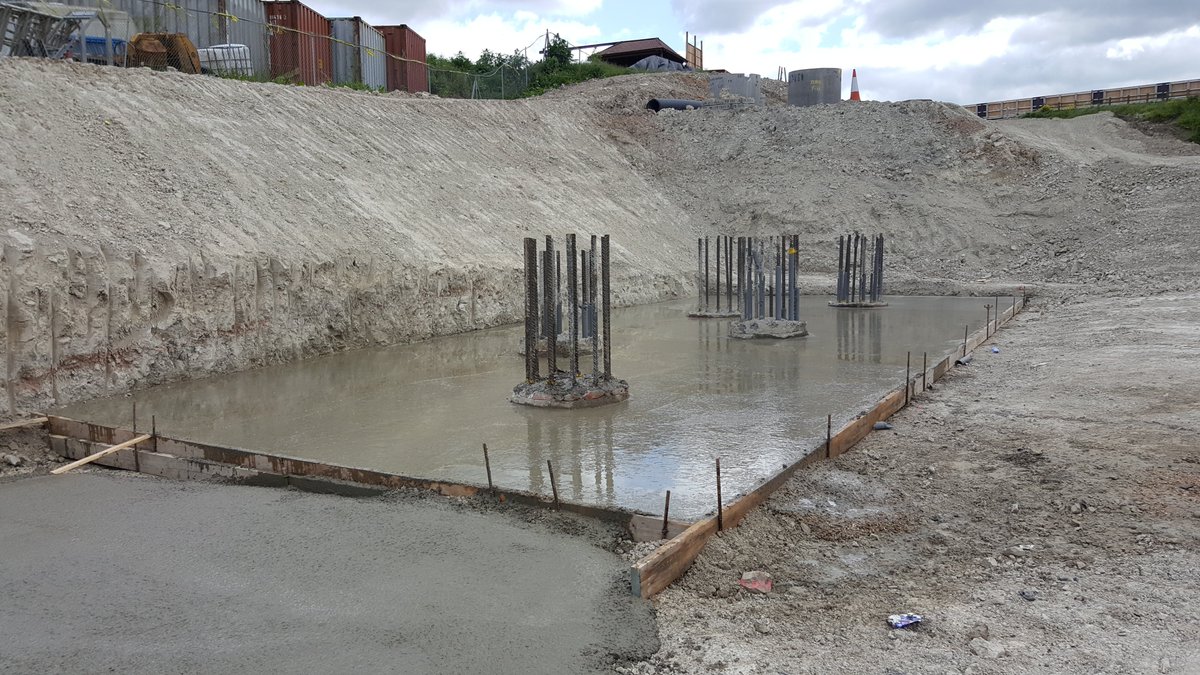
Holding-down bolts are fixed into the pile-cap, this will bolt the metal structure to the concrete, pilecap is then cast and you have a huge block of concrete as in pic. Pilecaps can sometimes be buried but most are above ground as it protects steelwork from impact 16/ 

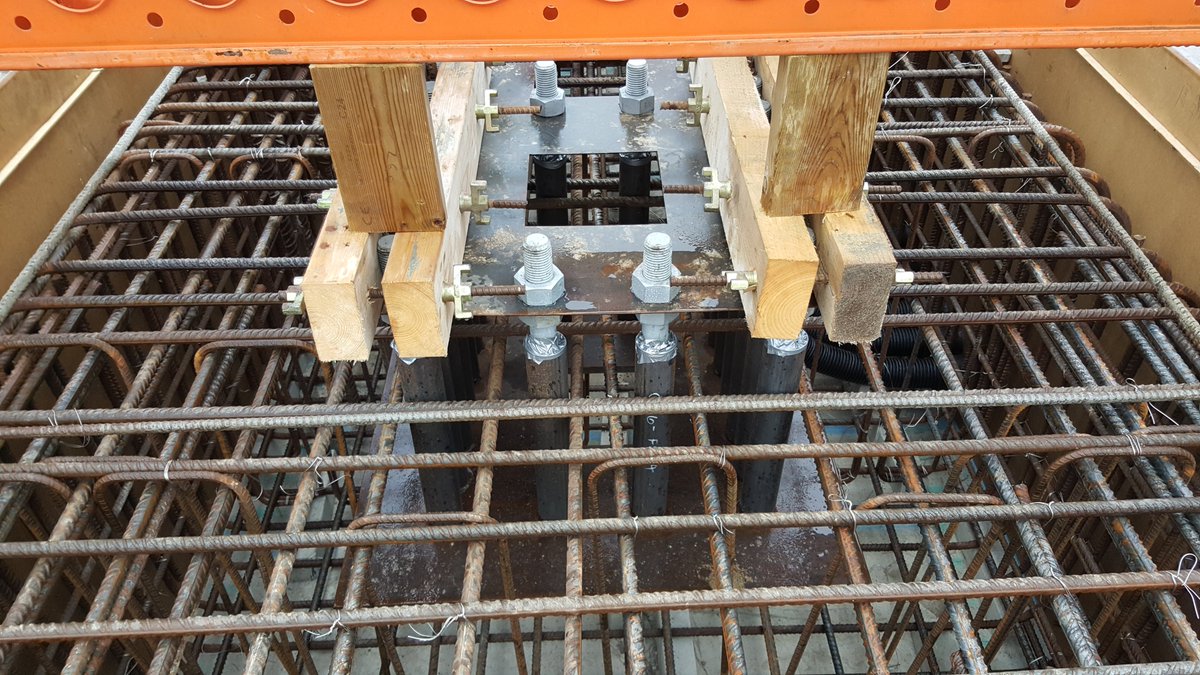
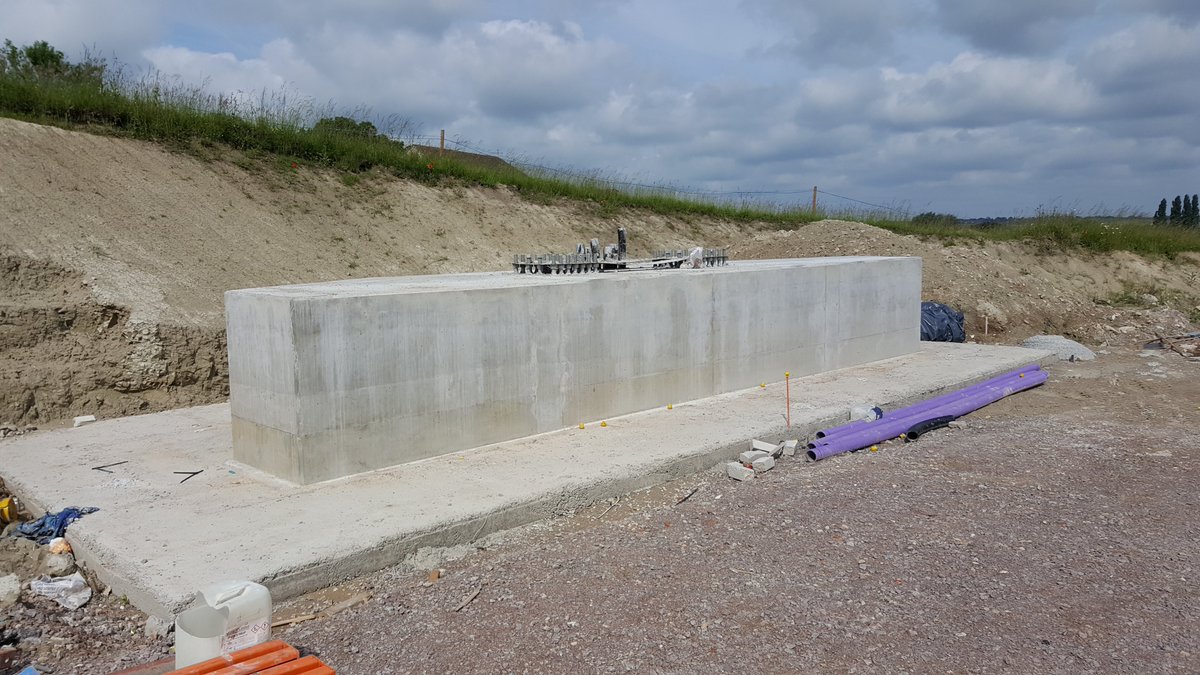
Pic 1: Buried pilecap, top is flush with ground level, which looks neater and tidier. Pic 2: pilecap is below ground (under paving slabs), but a plinth sits on top which steelwork is bolted down to. However Pilecap + plinth takes longer to build so new gantries have 1 large cap 

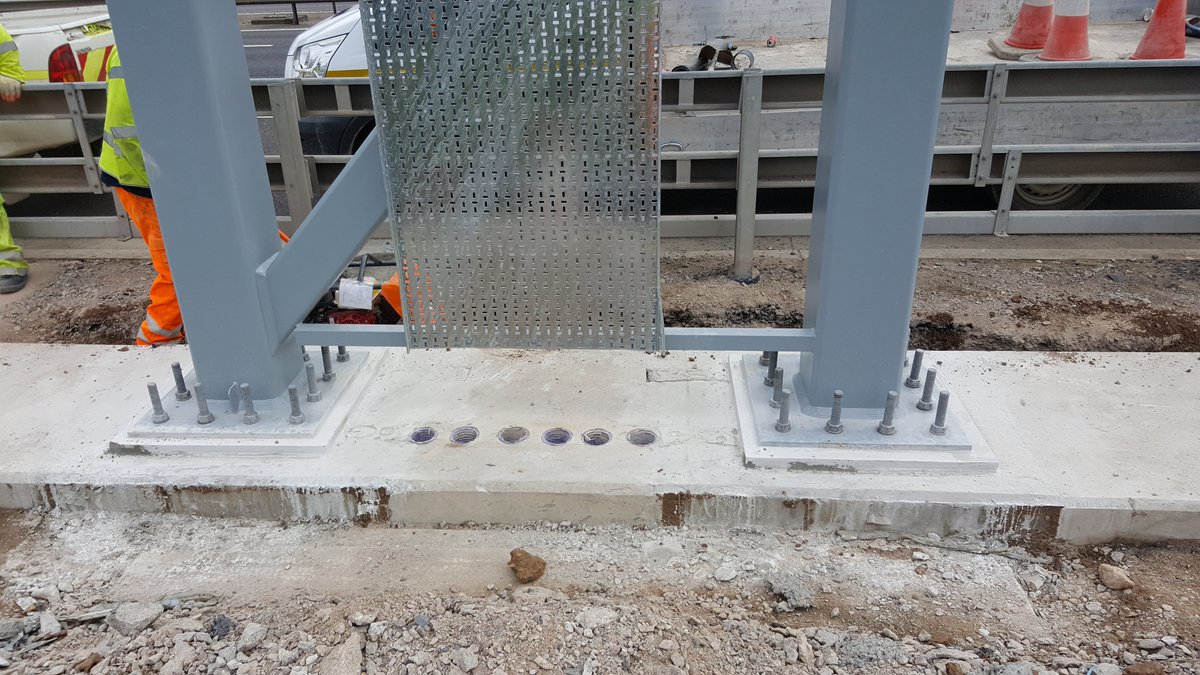
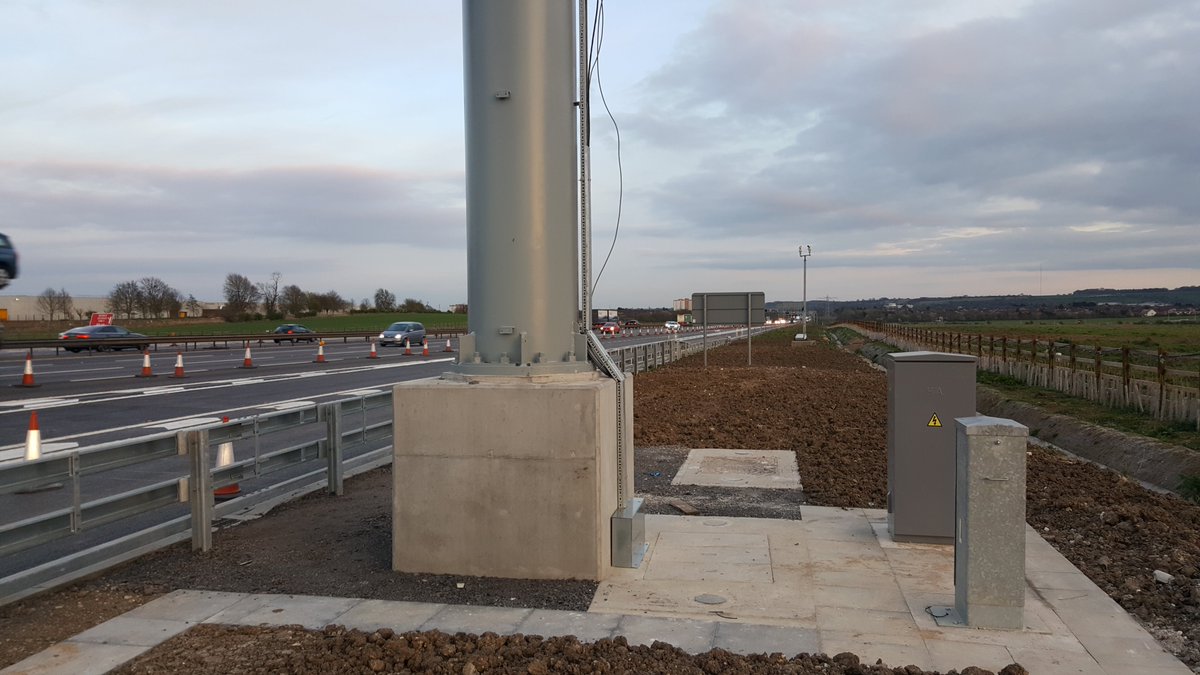
The holding-down bolts can be on large frames which clash with the pile starter bars (bits of steel sticking out of the piles) which is why plinths are used to lift bolts over the starter bars. New gantries have piles spaced further apart so bolts fit inbetween but looks bulkier 

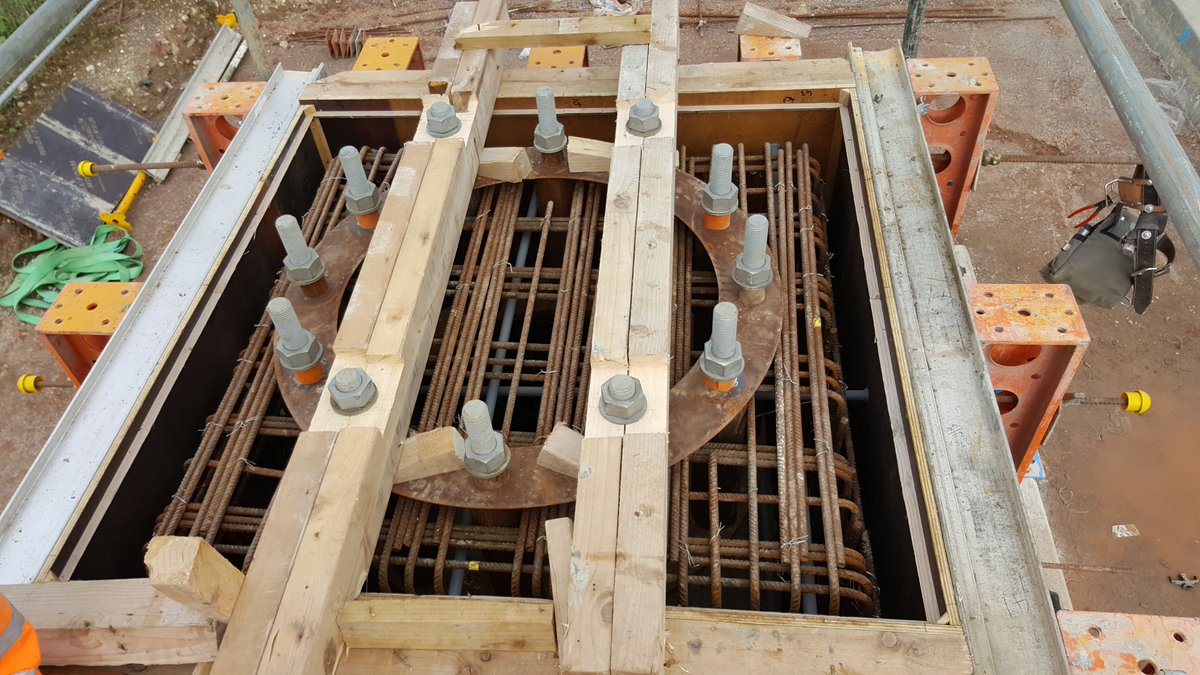
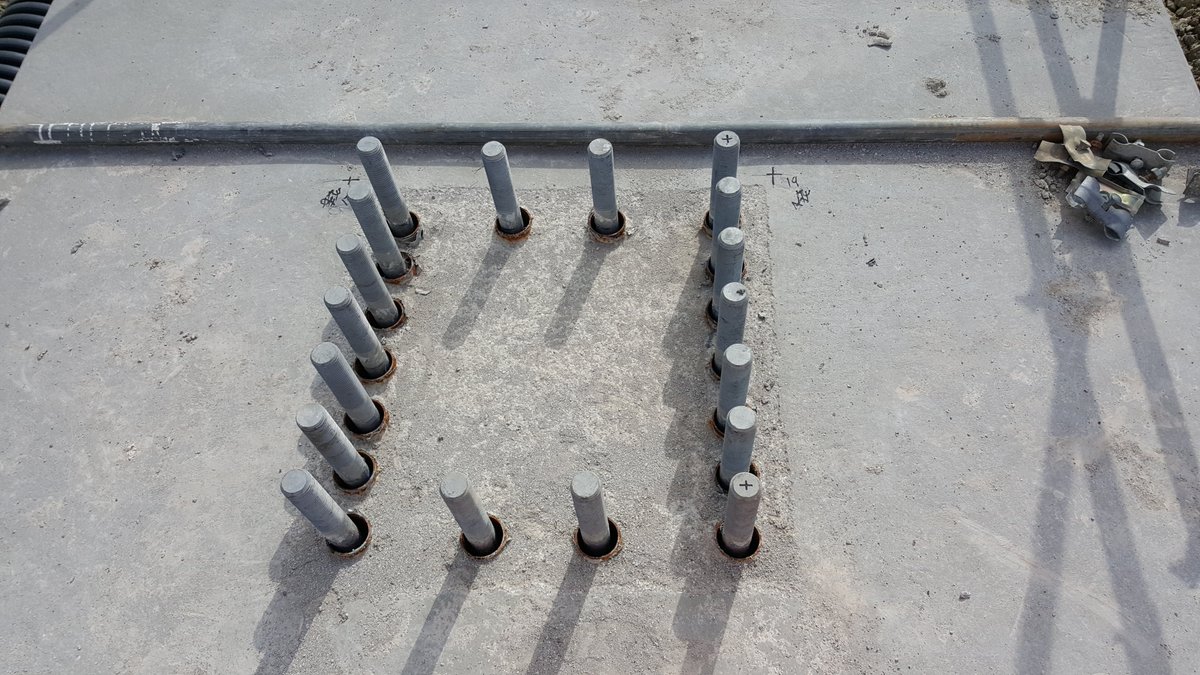
All that tech needs steel support; pic1: Fuse boxe mounts, Pic 2: MS4 frame, pic3: cable trays along the truss, pic 4: AMI (above-lane) indicators; all add weight which increases steel section & foundation sizes. 19/ 



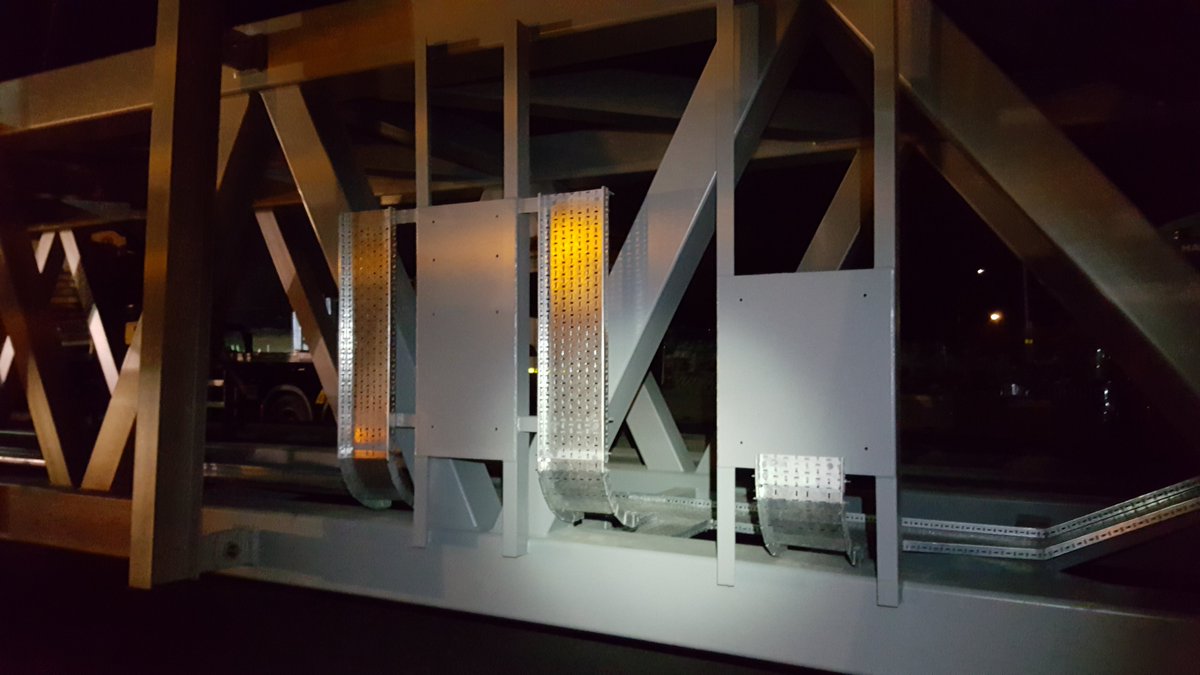
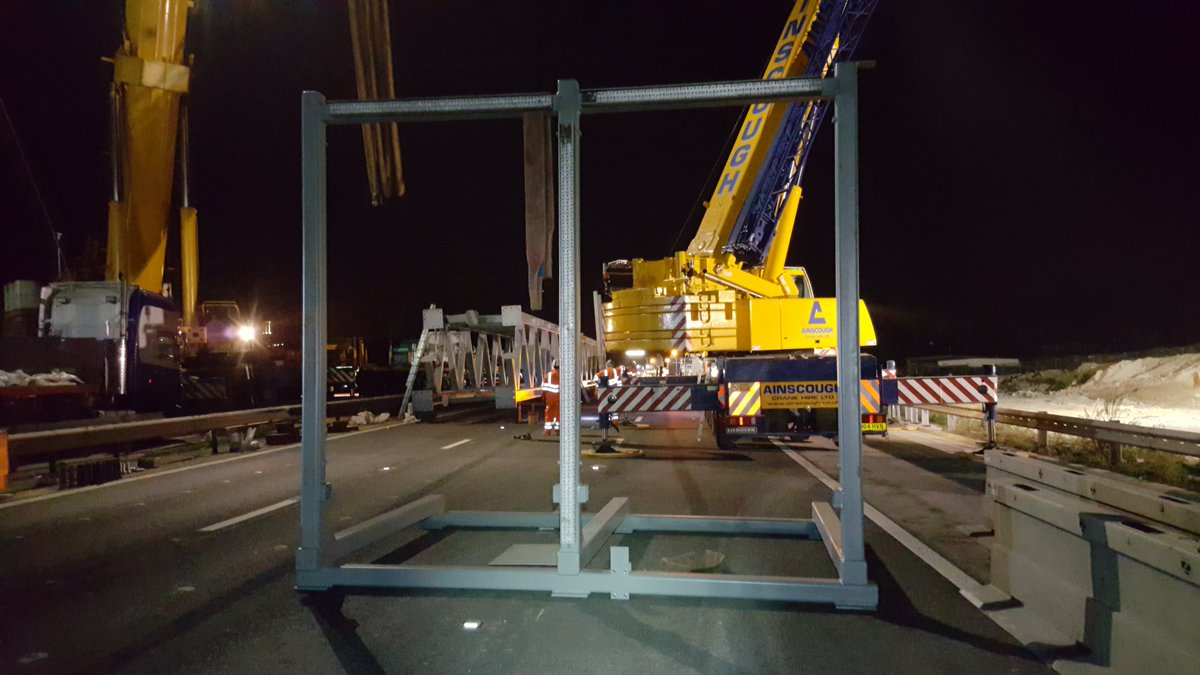
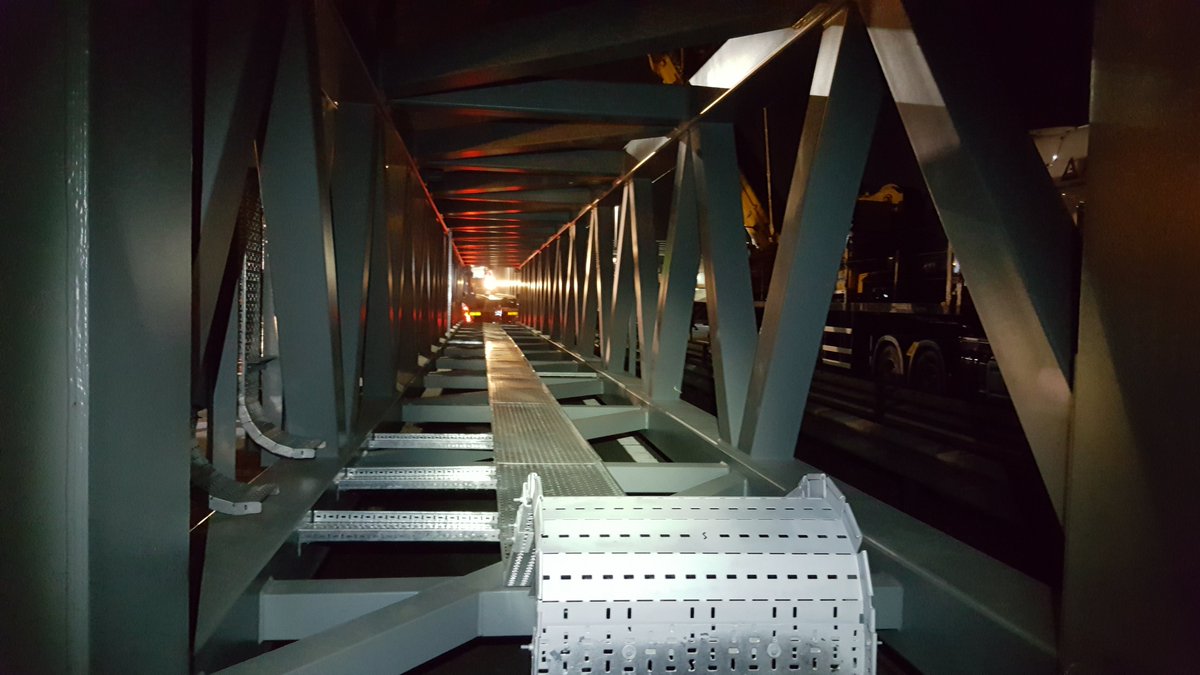

As more motorways are upgraded, wider lanes means gantries are increasingly used as verge-signs can be blocked by lorries, so they are popular to use. To reduce the maintenance burden, on later Smart Motorways the frequency was reduced so some motorways have them far less often
That's probably enough for one night! Some final pics to finish, this is the M1 J11a northbound exit slip gantry, two AMIs (Lane Indicators) and lane guidance signs, probably one of my favourites despite its small size. END/
#construction #civilengineering



#construction #civilengineering
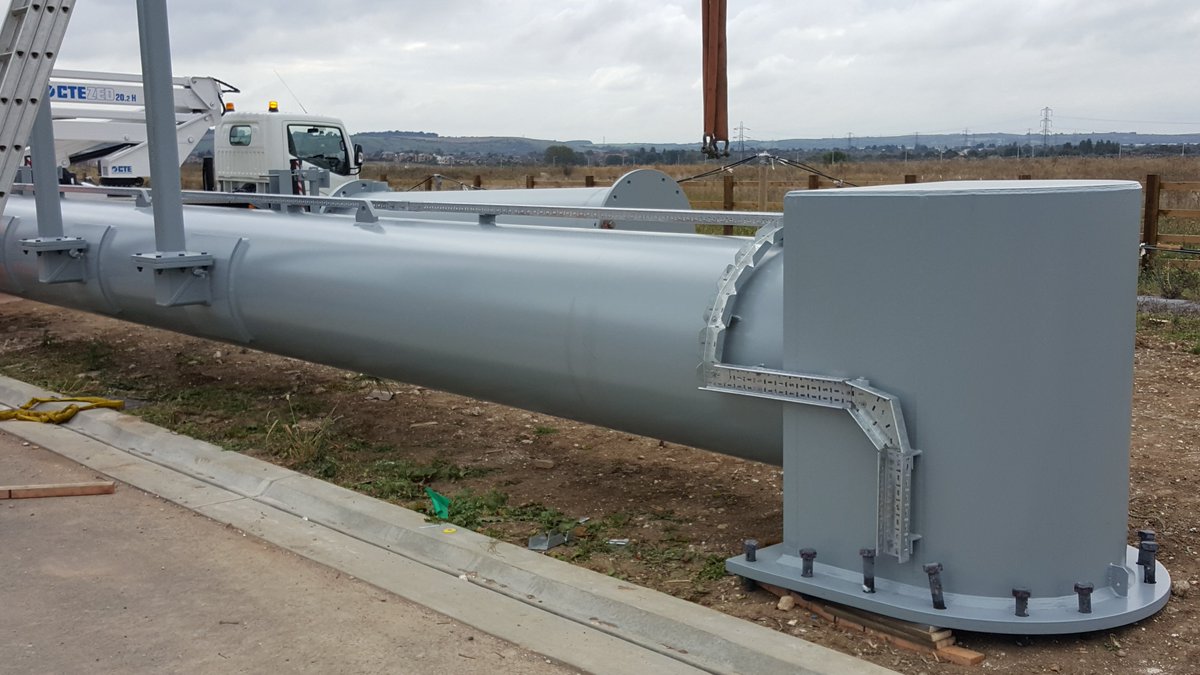
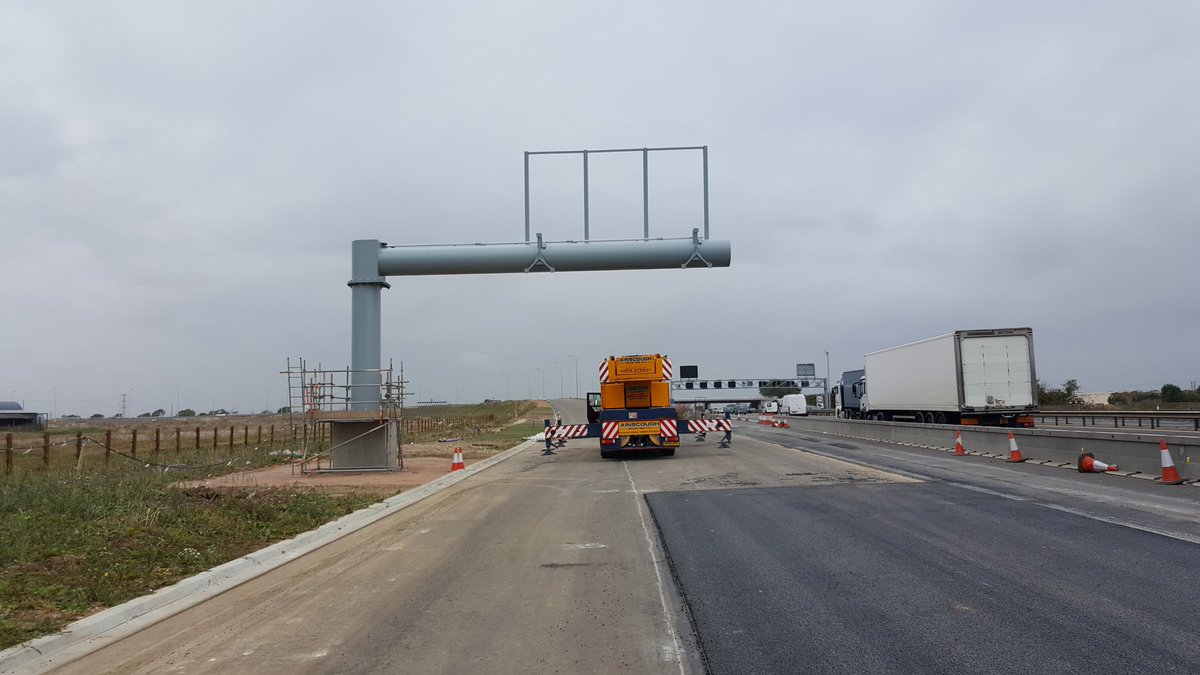
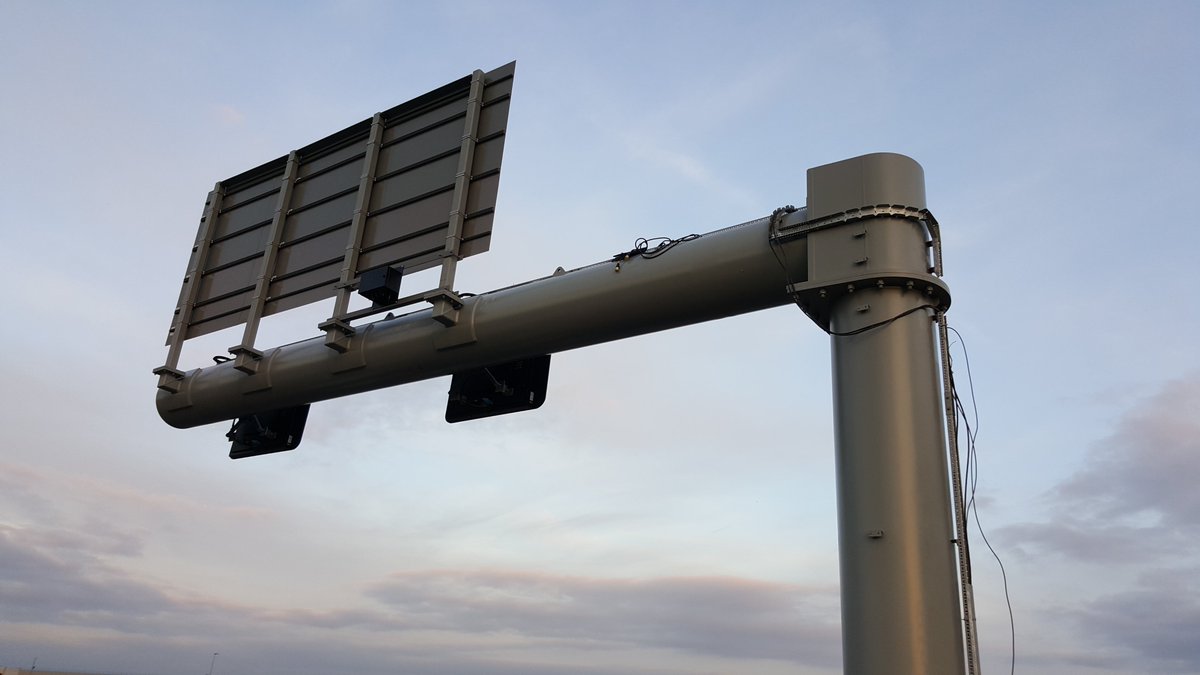
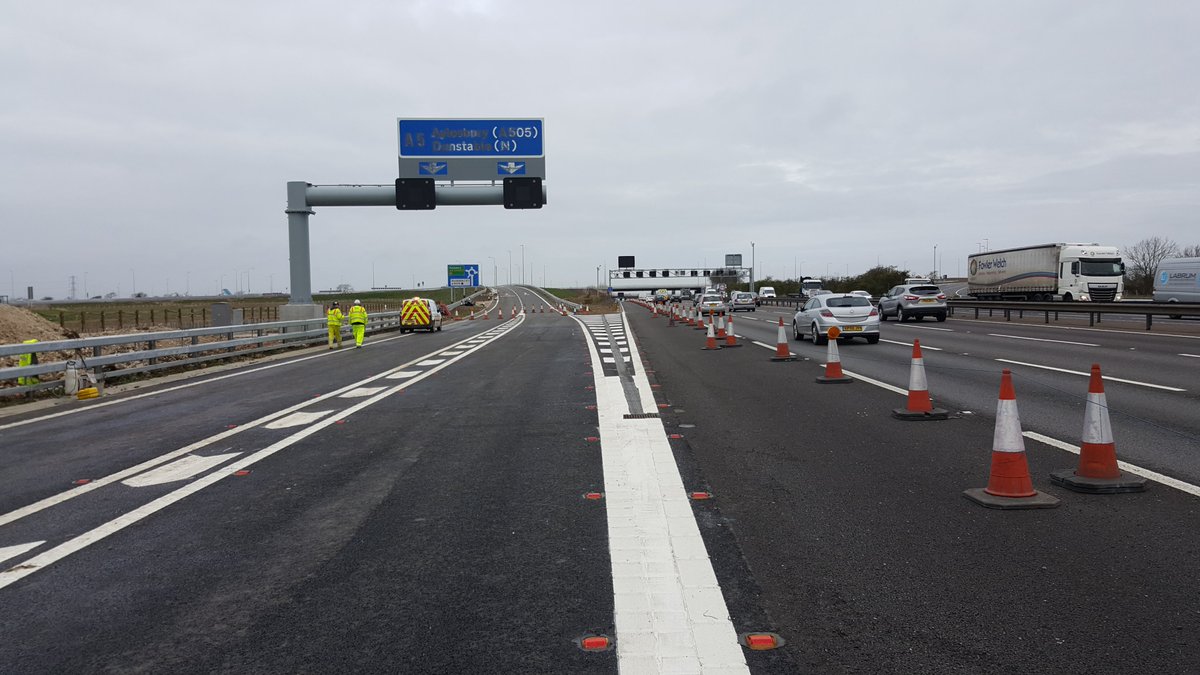
PS: this wasn't intended as a full history of gantries, but if you want to know more then @roads_uk have a great article to explain the earliest attempts through to the MS4:
roads.org.uk/articles/mixed…
roads.org.uk/articles/mixed…
@threadreaderapp unroll please
• • •
Missing some Tweet in this thread? You can try to
force a refresh






